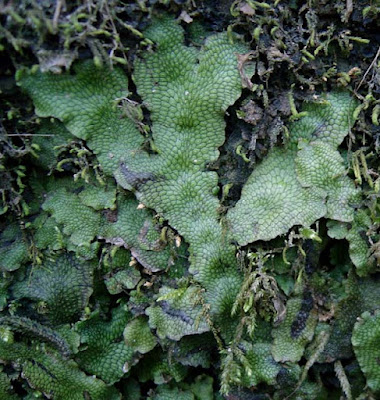This post will focus on small scale beauty provided by native herbaceous perennials that grow in the forest surrounding our home and garden, the often overlooked pretty little wild things.
Asarum arifolium, commonly known as wild ginger because the odor of a crushed leaf reminds of culinary ginger, Zingiber officinalis, is common in our forest, even in the driest, shady places under mature oaks and beeches where not much else grows. It has very attractive, arrowhead-shaped, evergreen leaves, often marked with blotches of silver between the veins. During the winter, leaves on clumps in exposed positions may take on a purple cast.
Asarum arifolium with silver markings
Asarum arifolium with purple cast
Lycopodium digitatum (Running Cedar) is a clubmoss (fern relative) with fine-textured, evergreen foliage. It spreads underground, forming large patches over time.
Heuchera americana (Alumroot) is also very common in our forest, but prefers brighter light and more moisture than Asarum arifolium and is mostly found on the lower slopes above the creek's floodplain. There is much variation in leaf color and the intensity of the markings between the veins.
Heuchera americana, green with silver
Heuchera americana, purple with silver
Trillium underwoodii is native to the Florida panhandle, not North Carolina, but Alani shared some with me and they've done beautifully here. They take our colder winters just fine, but often respond to our winter warm spells by sprouting prematurely. If temperatures are forecast to drop below 20°F after they sprout, I tuck them in at night by laying a blanket over the patch. This is an infrequent inconvenience, the fantastic mottled foliage makes it all worthwhile.


























